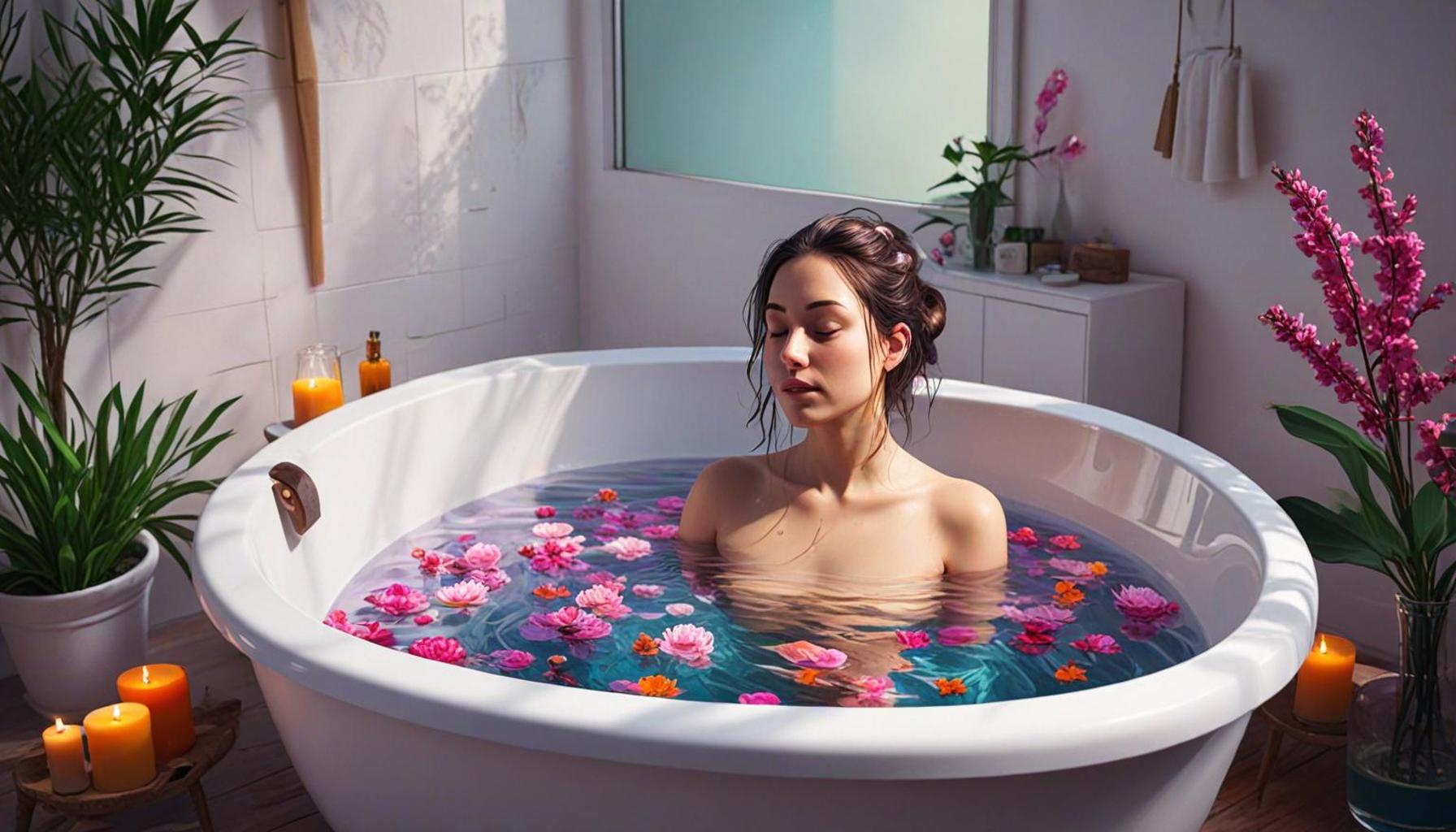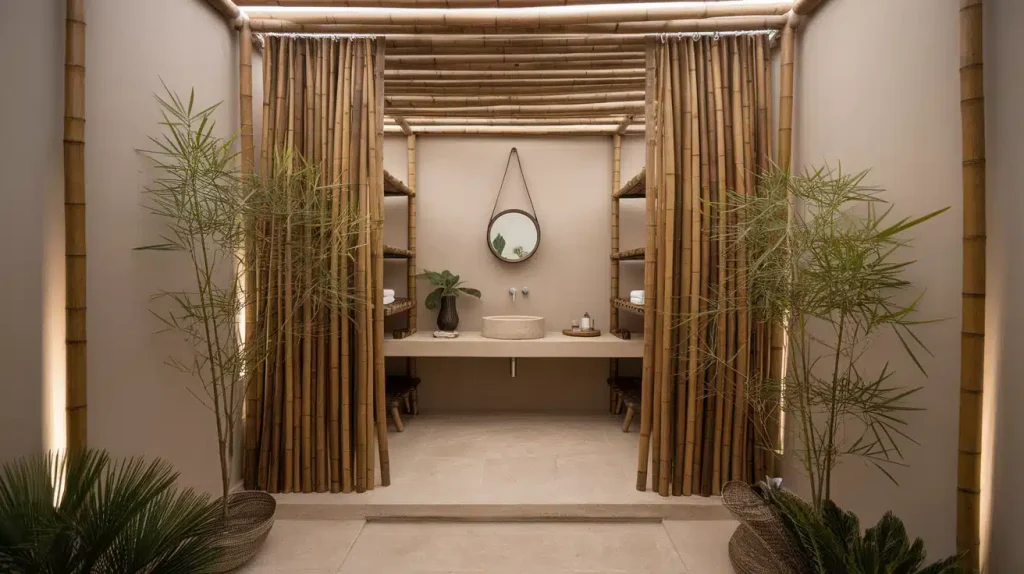Transform Your Bath into Deep Relaxation The Art of Shower Meditation

In our fast-paced world, finding moments of peace can be a challenge. However, shower meditation offers a powerful solution, transforming an everyday act into a sanctuary for the mind and spirit. This practice not only enhances relaxation but also helps in restoring focus and clarity amidst the chaos.
Integrating meditation techniques into your bathing ritual can lead to substantial benefits, including:
- Stress reduction: The calming effect of water combined with mindfulness creates a natural stress relief.
- Enhanced mindfulness: Focusing on the sensory experience allows for greater presence in the moment.
- Increased creativity: Shower thoughts are often rich with inspiration, and mindfulness elevates that potential.
This article will guide you through the Top 5 techniques for enhancing your shower meditation experience, revealing how you can turn an ordinary bath into an oasis of tranquility. Prepare to unlock the full potential of your bathing ritual and embrace a more peaceful mindset.
SEE ALSO: Click here to read another article
The Art of Shower Meditation: Transforming Your Bathing Ritual into a Moment of Deep Relaxation
In today’s fast-paced world, where the relentless ticking of the clock can often leave us overwhelmed, it becomes imperative to find sanctuaries of serenity amidst the chaos. One surprisingly effective yet often overlooked method to achieve this is through shower meditation. By infusing mindfulness into your daily bathing ritual, you can transform this mundane task into a deeply enriching experience that revitalizes both body and soul. Let us explore five remarkable techniques to turn your shower space into a haven of peace and mindfulness.

5. Create Your Ideal Atmosphere
Your surroundings play an integral role in establishing a mood conducive to relaxation. Crafting an environment of tranquility in your shower can significantly amplify the benefits of meditation. Various elements can be fine-tuned to achieve this serene cocoon:
- Lighting: Opt for warm, soft lighting to establish a cozy and comforting ambiance. Consider installing dimmable lights or even candlelight to soothe the senses.
- Scent: Harness the power of scent with fragrant essential oils or shower gels infused with aromas like lavender, eucalyptus, or chamomile, which are known for their calming attributes.
- Sound: Curate a soft music playlist or play the gentle symphony of nature sounds, like ocean waves or bird songs, to enhance the shower’s aura of serenity.
By consciously designing a space that appeals to your senses, you set the stage for a comforting meditation session. This environment will encourage you to pause, breathe, and fully immerse yourself in the present moment.
4. Practice Deep Breathing Techniques
At the heart of many meditative practices is the art of mindful breathing. In the comforting safety of your shower, you can focus on deep breathing techniques to bring about tranquility and focus.
Consider the following steps for an effective breathing practice:
- Inhale Deeply: Take a long, deliberate breath through your nose, allowing your lungs and abdomen to expand completely.
- Hold: Pause briefly, savoring the stillness and fullness of the breath within you.
- Exhale Slowly: Gently release the breath through your mouth, consciously letting go of any tension with each exhalation.
Repeating this sequence several times can enhance clarity of mind, significantly reduce stress levels, and instill a lasting sense of peace. As thoughts intrude, gracefully shift your focus back to your breath, cultivating a profound sense of mindfulness.
3. Engage in Sensory Awareness
Shower meditation offers a perfect opportunity to engage fully with the senses, grounding us in the here and now. Heighten your awareness by tuning into the varying sensations that encompass your body as you bathe.
Explore these sensory dimensions:
- Water Texture: Observe how the water cascades onto your skin. Is it gentle or invigorating? Warm or cool? Experience each droplet as if for the first time.
- Temperature: Adjust the water to a temperature that aligns with your state of mind—warmth to unwind or cooler to refresh and stimulate.
- Fragrance: Delight in the aromatic symphony of your shampoo, body wash, or essential oils, noting how the scents mingle and evolve.
This focus on sensory perception draws you out of automatic behavior, rendering each shower unique. Engaging actively with your environment fosters a deeper state of relaxation and an intentional approach to self-care rituals.
2. Visualize Your Intentions
Visualization is a powerful meditative tool that can be seamlessly incorporated into your shower routine. As you cleanse your body, take a moment to reflect on your projections and aspirations for the future.
Integrate visualization with these ideas:
- Picture Your Goals: Bring to mind an image of a personal objective or a tranquil state you wish to achieve.
- Release Negativity: Envision the water as a conduit, rinsing away stress, apprehensions, and any negativity that clouds your consciousness.
- Embrace Positivity: Allow the water to not only cleanse your body but also rejuvenate your spirit, welcoming a burgeoning tide of positive energy.
Visualization cultivates clarity and resolve, enabling you to discard obstructive thoughts and embrace a refreshing sense of purpose with each drop of water.
1. Embrace a Mindful Exit Ritual
Concluding your shower meditation with a mindful exit is vital to ensure that the peace you have cultivated lingers throughout the day. Assimilate a simple ritual that bridges the quietude of your shower to your daily life.
Adopt these mindful practices:
- Express Gratitude: Acknowledge the privilege of water, warmth, and time dedicated to nourishing your well-being.
- Set an Intention: Reaffirm the intention or emotion that will guide your actions as you leave this cocoon of serenity.
- Dress with Care: Transition thoughtfully from the bath by using soft towels, moving with grace, and choosing attire that reflects your mood.
This final act reinforces the meditative experience and cements a state of associated peace that you carry forward into your interactions, making each day a new canvas of tranquility.
Shower meditation is more than a trend; it is a potent practice imbued with the potential to redefine your relationship with everyday tasks. By creating an intentional atmosphere, practicing deep breathing, engaging your senses, visualizing positive intentions, and adopting a mindful exit, you’ll find a transformative pathway to serenity and self-awareness right in the comfort of your shower.
| Category | Description |
|---|---|
| Aromatherapy | Using essential oils and scented candles can enhance your bathing experience by creating an inviting atmosphere that promotes relaxation. The scents from natural oils like lavender or eucalyptus can calm the mind and body, making it easier to let go of stress. |
| Mindfulness Techniques | While in the bath, practice being present. Focus on the sensations of water on your skin and the sounds around you. This practice helps you cultivate mindfulness, which studies show can significantly reduce anxiety and increase overall feelings of well-being. |
| Breathing Exercises | Incorporate deep breathing exercises while soaking in the bath. This involves taking slow, deep breaths to calm your nervous system. Research suggests that intentional breathing can lower heart rate and stress levels, enhancing your bathing ritual. |
| Ambient Music or Soundscapes | Listening to calming music or nature sounds can transform your bath into a serene nook of tranquility. Music has been shown to impact mood and relaxation levels, making your bathing experience even more restorative. |
By integrating these elements into your bathing ritual, you create more than just a chance to cleanse your body; you provide an opportunity for rejuvenation and mental clarity. Each practice offers an avenue to turn your bath into a sanctuary of peace, inviting you to immerse yourself in relaxation that extends beyond the physical. Research is continuously emerging about the benefits of these practices, proving that even simple rituals can significantly enhance your emotional and mental health when approached with intention. Delve deeper into each one and see how it transforms not just your bath, but your overall approach to daily stress.
YOU MAY ALSO LIKE: Read this other article
Frequently Asked Questions About Meditative Bathing
What are the benefits of incorporating meditation into my bathing routine?
Integrating meditation into your bathing ritual can lead to numerous benefits, such as enhanced relaxation, a greater sense of peace, and improved overall well-being. The combination of warm water and mindfulness practices can help reduce stress, soothe muscle tension, and even promote deeper sleep. Additionally, the sensory experiences of water, scents, and sounds can elevate your practice, transforming a simple bath into a holistic wellness session.
How can I start meditating in the bath if I’m a beginner?
Starting meditative bathing is simple. Begin by setting the right atmosphere: dim the lights, light a candle, or play soft music. As you settle into the water, focus on your breathing. Inhale deeply through your nose and exhale through your mouth. Allow thoughts to pass without judgment as you bring your attention to the sensation of the water against your skin. Start with short sessions, gradually increasing the time as you become more comfortable. Remember, the goal is to find inner peace, not perfection.
Are there any specific techniques or tips to enhance meditation while bathing?
To enhance your experience, consider using essential oils to create an aromatic environment that can aid relaxation. Visualizations, such as imagining the water washing away stress, can deepen your meditation. Guided meditations, accessible through various apps, can also provide a structured approach for beginners. Incorporating affirmations or mantras quietly during your bath can further focus your mind and amplify the meditative process.
Can meditation in the bath help with anxiety and stress management?
Yes, meditation during bathing can be particularly effective for managing anxiety and stress. The act of being immersed in warm water alone has calming effects, which, when paired with meditation, can significantly reduce cortisol levels, the body’s primary stress hormone. By focusing on the present moment and becoming aware of your breathing and bodily sensations, you’ll foster a state of tranquility that can counteract the stresses of daily life.
SEE ALSO: Click here to read another article
Conclusion
In today’s fast-paced world, finding moments of tranquility can significantly enhance our well-being. The art of shower meditation offers an accessible and effective way to transform an everyday routine into a profound relaxation experience. By harnessing the natural sanctuary of a bathroom, individuals can practice mindfulness, focus on the sensory elements of water, and let go of daily stress.
The key takeaways from embracing this practice are numerous. Firstly, mindful breathing during showers sets the stage for a meditative state, aligning one’s focus with each inhalation and exhalation. Additionally, practicing body scanning allows one to connect with physical sensations, promoting heightened awareness and release of tension. Engaging the senses further enhances the experience, as the warmth and texture of water act as meditative anchors. Moreover, visualizations provide an opportunity to clear the mind by imagining worries being washed away, ushering in mental serenity.
Adopting shower meditation goes beyond mere relaxation; it cultivates mental resilience and clarity. By integrating these practices into daily routines, individuals can foster a deeper connection with themselves, mitigating stress’s impact on both mental and physical health.
The art of shower meditation encourages us to cherish the simplicity and therapeutic potential of water, urging a reconnection with an ancient human affinity for this element. As we reflect on these insights, it’s clear that the humble shower can be more than just a cleansing ritual. It can become a gateway to inner peace and resilience—a sacred space where we emerge not just refreshed, but also revitalized.


